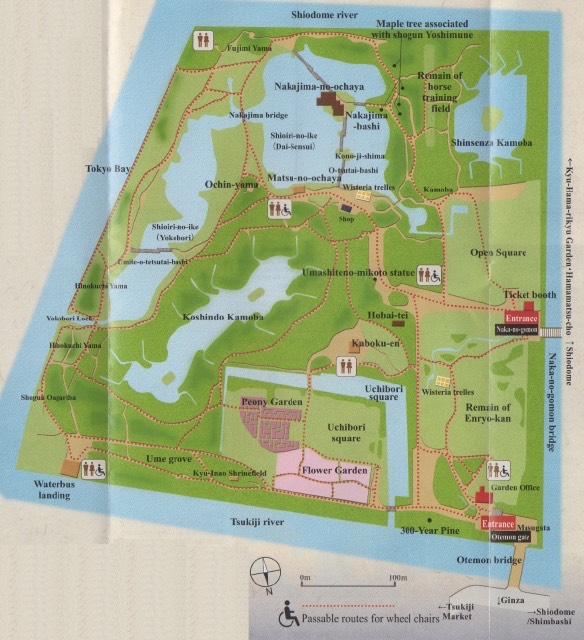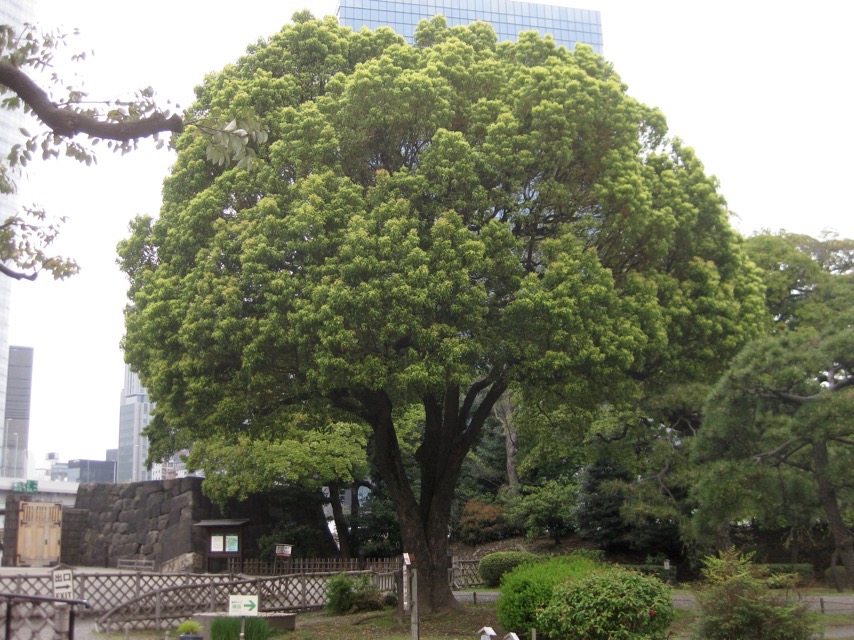In 1654 the younger brother of the 4th shogun built a detached residence on this land which had been reclaimed from the sea for hawking sites. When his son became the 6th shogun, the house became a residence of the shogun’s family and became know as Hama-goten (Beach Palace). Improvements to the grounds continued up to the 11th shogun. The name changed to Hama-rikyu after the Meiji Restoration, when it became a palace of the Imperial Family. The buildings and some trees were damaged in the Great Kanto Earthquake and from bombing during the war. The garden was donated to the City of Tokyo in 1945 and was opened to the public in April 1946 after some restoration work.
浜離宮 = Hama-rikyu

The garden has been designated as a Special Place of Scenic Beauty and Special Historic Site.
Total area 61.8 acres
6,077 large trees
2,085 small trees plus 28,614
I entered the garden at the Otemon Gate (bottom right of the plan). After paying the 300 Yen entrance fee, a young lady offered me a “Ubiquitous Communicator”, a smart device equipped with “Ubiquitous ID Technology” which is used as a guide to the garden. It was free of charge so I tried it. As she was dressing me in it, it started to rain so she went and got a plastic bag and put the device inside, hanging around my neck. As you approached specific markers in the garden, information about that place would play. If you walked away again it would stop. It seemed useful at first but if the descriptions were too long you did not get all of it before moving out of range. Apparently it would also operate by tapping on the touch screen, but given the weather I didn’t use it, too busy keeping me and the camera dry.
The plan of the garden is taken from the brochure (inside & outside).
My route was roughly a counter-clockwise loop. Near the entrance, on the left, there was a large tree, Cinnamomum camphora, (see below) which I thought had a very nice shape. Beyond that, a few steps away was one of the highlights of the garden, the 300-Year Pine, which merits a page all its own.

Cinnamomum camphora